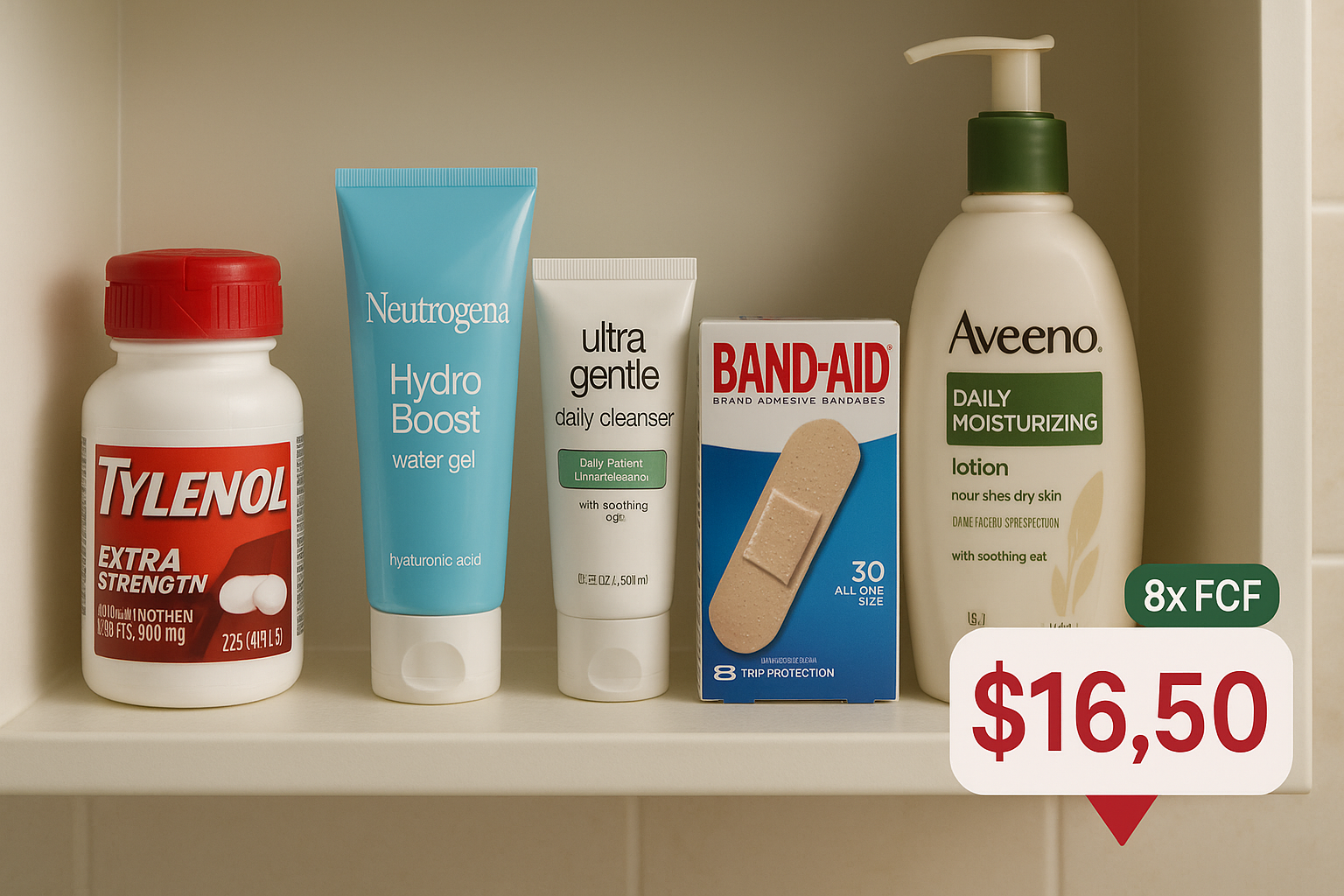In a market obsessed with AI moonshots and tech stocks sporting P/E ratios that would make your financial advisor wince, I've been struck by something genuinely unusual: a consumer staples giant trading like it's going out of business when it's... decidedly not.
Kenvue—the Johnson & Johnson spinoff you might not have heard about but whose products definitely fill your bathroom cabinets—is hovering around $16.50 a share. And frankly, that price makes about as much sense as using Listerine as cologne.
Let's get real for a second. This isn't some speculative biotech burning cash while promising miracles. We're talking about Tylenol, Neutrogena, Band-Aid, Aveeno—brands so embedded in American households they're practically family members. These products aren't going anywhere, recession or not.
Show Me the Money (And It Actually Does)
With $15.5 billion in revenue and $2.1 billion in free cash flow, Kenvue is quietly printing money while nobody's watching. At current prices, you're looking at roughly 8x free cash flow.
Eight times. Free. Cash. Flow.
I've covered consumer goods stocks since 2015, and I can't remember the last time I saw established brands with this kind of pricing power trading at such a discount. Meanwhile, investors are happily forking over 30x+ multiples for tech companies whose "adjusted EBITDA" requires a decoder ring to understand.
The dividend yield sits at about 4.75%—and unlike many dividends that barely cover your Starbucks habit, this one actually moves the needle. It beats Treasury yields while offering something government bonds don't: pricing power when inflation rears its ugly head.
Yeah, But What's the Catch?
Look, there's always a bear case. Nothing trades this cheap without some warts.
The Tylenol lawsuits aren't nothing. Plaintiffs claim acetaminophen use during pregnancy is linked to autism and ADHD—exactly the kind of litigation that makes corporate lawyers wake up in cold sweats. There's also the broader shift toward "natural" alternatives that has some analysts concerned about long-term market share.
But here's where perspective matters. At $16.50, it's like the market has already assumed the worst-case scenario. J&J, before the spinoff, traded these same assets (with identical risks) at substantially higher implied multiples.
When I spoke with several consumer goods analysts last week, the phrase "market overreaction" came up repeatedly. One veteran portfolio manager (who requested anonymity because his firm is still building a position) called it "one of the more obvious dislocations in large-cap value right now."
The Buffett Sniff Test
I've always found it useful to apply what I call the Buffett sniff test: If the entire company were for sale, would a rational business owner pay the current market price?
At roughly $40 billion for a business generating $2.1 billion in free cash flow with some of the most recognized brands in America... well, private equity would be salivating if they could finance a deal this size.
This isn't theoretical. Consumer staples brands with strong market positions have been acquisition targets for decades precisely because their cash generation is so reliable. (Remember Kraft-Heinz? That little Buffett/3G shopping spree?)
Trading vs. Owning—A Classic Dilemma
The original poster's swing trade idea—targeting $22+—makes perfect sense. That's a meaty 33% upside if it materializes.
But here's where I'm actually going to diverge slightly from conventional trading wisdom. Sometimes the best short-term trade is actually a great long-term investment in disguise.
Consumer staples with global distribution networks and pricing power tend to compound value over time. That dividend—which, again, isn't some piddly 1% yield—provides meaningful returns while you wait for the market to recognize what it's missing.
That said... a potential 33% upside in a relatively short timeframe isn't exactly something to sneeze at in this market environment.
The Bottom Line
At current prices, Kenvue offers something increasingly endangered in today's market: an actual margin of safety. Multiple expansion, dividend income, potential activist interest—there are numerous paths to returns here.
The risks? Real, but hardly existential for brands that have survived decades of changing consumer preferences and regulatory environments.
Sometimes the market hands you what looks suspiciously like a gift. It might be worth unwrapping this one.
(Disclosure: I don't currently own Kenvue shares, but after researching this piece, I'm seriously considering a position. My kids' college funds could do worse than owning brands with this kind of staying power at these multiples.)
